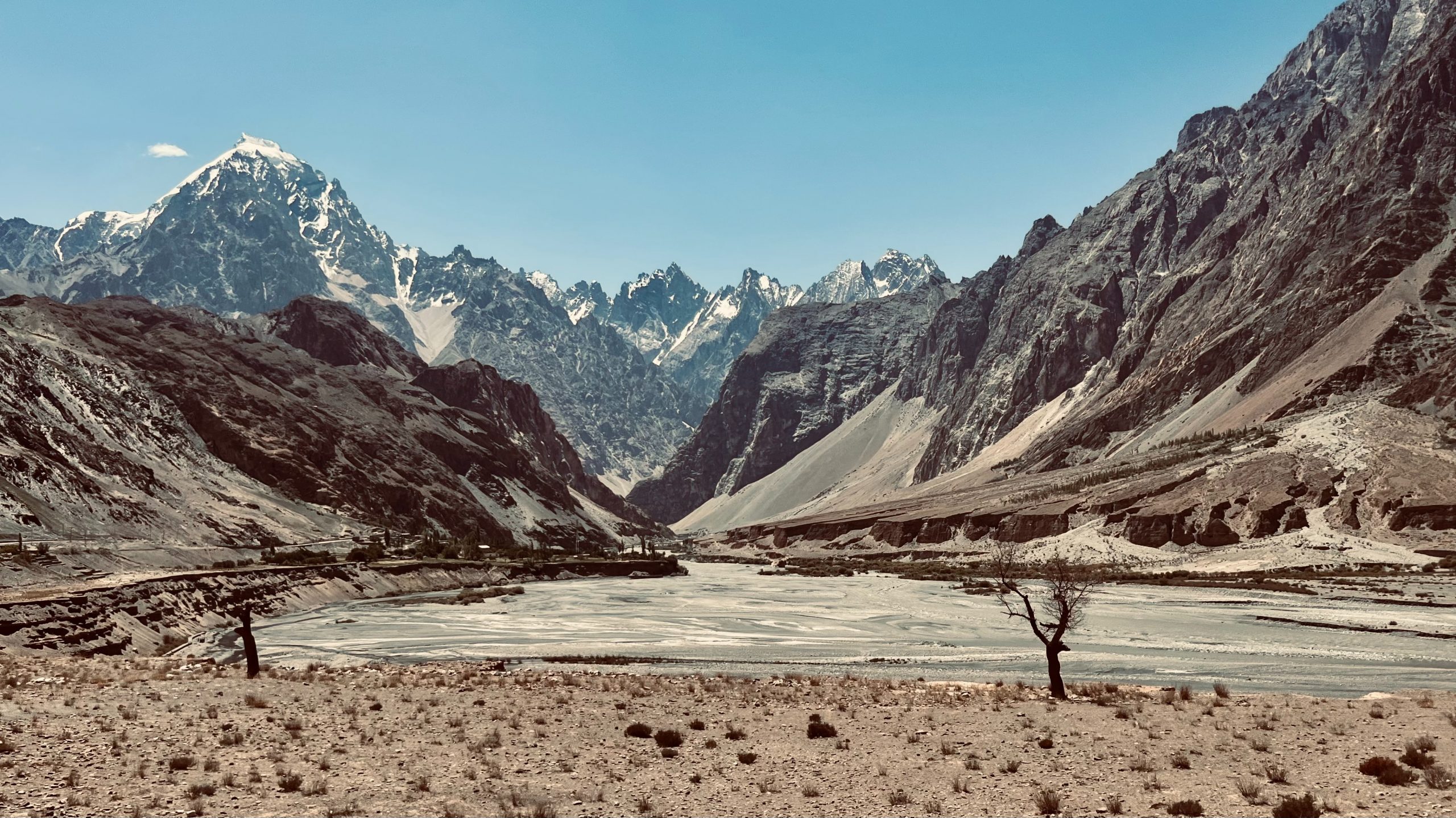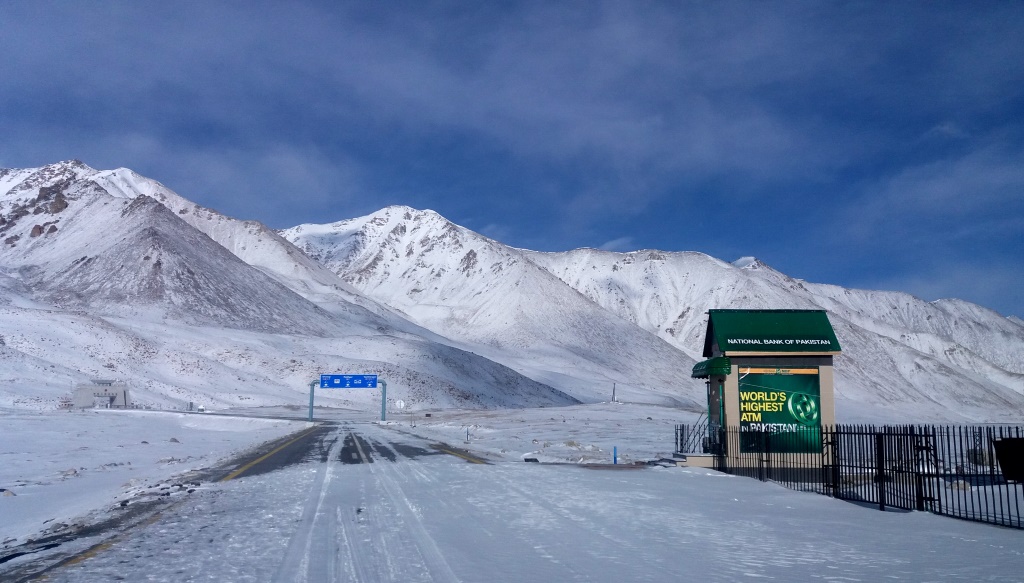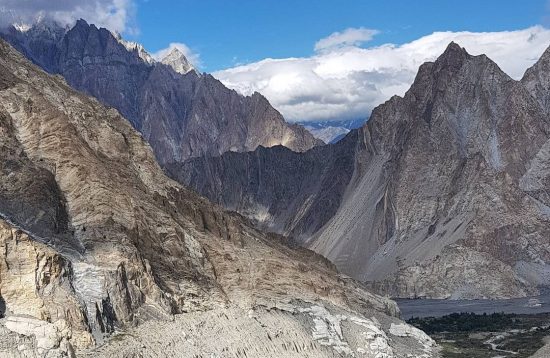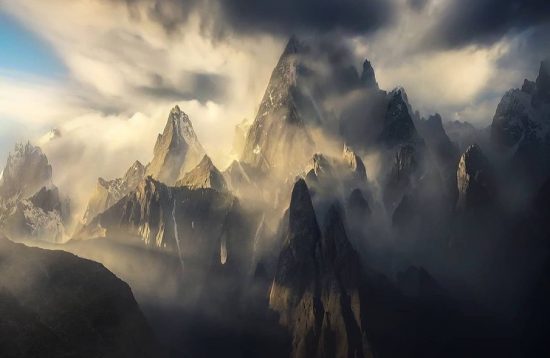
Khunjerab Pass | How to cross Pakistan-China border?
The Khunjerab Pass is Pakistan’s most famous mountain. Khunjerab Pass is also known as “Khunerjab Pass.” It is situated in the Karakoram Mountains on Pakistan’s northern border with China. The Khunjerab Pass is 4693 metres high. The Khunjerab Pass connects Pakistan and China via the Karakoram Highway. The name Khunjerab Pass comes from the Wakhi language. Mr. Yao Jing, Chinese Ambassador, stated that Chinese citizens will be able to visit Pakistan via the Khunjerab Pass.
Tourists flock to Khunjerab Pass during the month of July. The weather at Khunjerab Pass is extremely cold. It’s a wonderful place with beautiful mountains and scenery. There aren’t any tea stalls and food stalls at Khunjerab Pass, so bring your own snacks. The scenery from Khunjerab Pass is breathtaking. Tourists can stay in a variety of lodging options in Khunjerab Pass. Daily bus service is available between Gilgit and Kashgar via the Karakorum highway. Many international tourists come here to take in the breathtaking scenery.
In which province is Khunjerab Pass situated?
Set high in the Karakoram Mountains, the Khunjerab pass is strategically located on the northern border of Pakistan’s Gilgit-Baltistan Hunza-Nagar District and the southwest border of China’s Xinjiang region. Because of its elevation, it is highly recommended that you limit your stay and leave during the day. Bring warm clothing because it can get very cold.
Khunjerab National Park(Khunjerab Pass)
Khunjerab National Park is Pakistan’s third largest national park. You can get to Khunjerab National Park from Khunjerab Pass. The Khunjerab National Park was established in the 1970s. Snow leopards are well-known in Khunjerab National Park. This park is home to the Tibetan wolf, Blue sheep, Brown bear, Marcoplo sheep, Dhole, Wood mouse, Red fox, Cape hare, and other species.

Khunjerab National Park is also home to a variety of birds, including the Golden Eagle, Snow Pigeon, Western Marsh harrier, Saker Falcon, Bearded vulture, Eurasian Kestrel, and Grey Heron. The World Wide Fund for Nature-Pakistan (WWF-Pakistan) has devised a strategy to safeguard the alpine flora of Khunjerab National Park. This park’s primary goal is to protect the Marco Polo sheep. Taxkorgan Natural Reserve in China is close to Khunjerab National Park.
World’s Highest ATM by National Bank of Pakistan
The National Bank of Pakistan had also made Pakistan proud once more by installing the world’s highest automated teller machine (ATM) at 15,396ft, at the Khunjerab pass(Gilgit Baltistan), also known as the Pakistan-China border.
Khunjerab Pass, t he Karakoram Mountains are home to the Pakistan-China border. It is located within Pakistan’s Gilgit-Baltistan Hunza, with the Nagar District on the southwest edge of China’s Xinjiang region. It is without a doubt a popular tourist destination, with a growing number of visitors. Consider yourself travelling in the lofty snowy peaks amidst the Pakistan-China border at an elevation of 15,396ft, and suddenly running out of cash. There is no need to worry because the world’s highest ATM is at your disposal.

The installation of the ATM began after obtaining sufficient height and other requirements from the Guinness Book of World Records. It’s easy to imagine how difficult this task must have been to complete in the harsh weather of Khunjerab Pass.
The automated teller machine(ATM) in Khunjerab Pass is powered by solar energy, and NBP has taken special care to ensure its supervision. It is governed by the nearest branch of the NBP. The ATM not only provides cash withdrawal but also services such as digital bill payment and funds transfer. NBP has ensured that the ATM works properly even during the harsh winters of Khunjerab. Technical issues and cash availability have also been addressed. Furthermore, it has been observed that this ATM has made life easier not only for tourists and travellers, but also for locals.
Source: Highest altitude automated teller machine (ATM)
Distance of Khunjerab Pass From Different Places
Khunjerab Pass Tours are easily accessible from a variety of locations.
| Cities | Distance in Km(Approximately) | Travel Time (Approximately) |
|---|---|---|
| Azad Kashmir to Khunjerab Pass | 700Km | 16hr 30min |
| Neelum Valley to Khunjerab Pass | 710Km | 16hr 40min |
| Gilgit to Khunjerab Pass | 275Km | 5hr 40min |
| Lahore to Khunjerab Pass | 1100Km | 17hr 20min |
| Islamabad to Khunjerab Pass | 755Km | 16hr |
| Skardu to Khunjerab Pass | 460Km | 9hr 10min |
| Chitral to Khunjerab Pass | 650Km | 15hr 50min |
| Fairy Meadows to Khunjerab Pass | 360Km | 7hr 45min |
| Naran to Khunjerab Pass | 500Km | 10hr |
| Hunza Valley to Khunjerab Pass | 179Km | 4hr 10min |
| Abbottabad to Khunjerab Pass | 640Km | 14hr 50min |
| Babusar Pass to Khunjerab Pass | 430Km | 8hr |
How to Cross the Pakistan-China Border at Khunjerab Pass?
Khunjerab Pass, at over 4,600m, is the world’s highest paved border crossing on the renowned Karakoram Highway. The world’s highest ATM is located here, as is the iconic door that divides the two countries.
This is the overland route used by business people, goods and supplies, and tourists to travel between Pakistan and China. Here’s everything you have to know before attempting to cross the Pakistan-China border at Khunjerab Pass.

Days & Hours Khunjerab Pass is Operational
The Khunjerab Pass is only accessible from Monday to Friday. Travelers aren’t concerned about the hours of operation because the border is just open to those taking the NATCO and Hunza-Xinjiang Trading Co. buses, as well as those with their own vehicles who will cross with the convoy of buses.
If you’re interested, the Chinese side is open from 11 a.m. to 8 p.m. Beijing time (9 am-6 pm Xinjiang time). The Pakistani section is accessible from 9 a.m. to 5 p.m.
The border is closed for Chinese and Pakistani holidays (as well as Islamic holidays), so make sure you don’t plan on crossing on a holiday.
Important Things To Know Before Crossing Pakistan-China Border at Khunjerab Pass
- You cannot pass between Tashkurgan and the Chinese entrance on your own. You must use the services of NATCO (Northern Areas Transport Corporation) and Hunza-Xinjiang Trading Company for transportation.
- The Khunjerab Port, where Chinese immigration is handled, is basically in Tashkurgan, approximately 100 kilometres from the actual gate.
- The Sost border, where you’ll clarify Pakistani customs and immigration, is around 85 kilometres from the gate.
- Cyclists must load their bikes onto the truck (NATCO or Hunza-Xinjiang) and take the bus from Tashkurgan to Sost.
- Motorcyclists and those driving their own automobiles must pass through the border in a convoy with the NATCO and Hunza-Xinjiang buses.
- The border entrance is located at approximately 4,600m/15,100ft. Bring more than enough water with you to help prevent altitude sickness.
- Money exchange in Tashkurgan can be difficult. For those travelling to China, it is recommended that they exchange a few money into RMB in Sost.
- Warm clothing is recommended. Even in the summer, it can be extremely cold and snow on top of the pass.
- On the Pakistani side, you must pay the Khunjerab National Park fee (even though you only drive through it).
Traveling from Pakistan to China
- Traveling from Pakistan to China is an easy process. Tickets can be purchased in ahead of time by visiting the NATCO or Hunza-Xinjiang offices or by calling.
- When you get there in Sost on the day you intend to depart, go over to the ticket counter and purchase your ticket showing your passport.
- Customs and immigration opens after 9:15 a.m., so you can get some breakfast and snacks for the road while you wait.
- Then, cross the street to the Sost immigration and customs post. It is simple and quick to leave Pakistan.
- When you enter the building, you will be instructed to place your bags on the ground and wait. Drug-sniffing dogs will be deployed.
- You’ll then be subjected to a health inspection. Your passport will then be checked and stamped, and your police registration card will be handed over. Then proceed to a quick customs inspection.
- After everyone with tickets has cleared, buses leave around 10 a.m. outside the immigration and customs office.
- The trip up to the Pakistan-China border at Khunjerab Pass will take about 3 hours, including a stop at Khunjerab National Park.
- When you get there at the Khunjerab Pass border gate, you must wait until it is opened. You can venture out and join the Pakistani tourists (you’ll almost certainly be asked to take hundreds of selfies) as you enjoy your final moments of freedom once having crossed into the military police state known as Xinjiang.
- After passing through the Khunjerab Pass gate, you’ll arrive at a military checkpoint and be thoroughly searched. This will include the standard military search with a Chinese authoritarian twist: cameras, laptops, and phones will be thoroughly investigated, bags will be scanned and then physically rifled through, you’ll even go through an X-ray, and some questions by chinese officers.
- You’ll have to wait for everybody on the buses to clear the checks because you’ll be travelling back to Tashkurgan as a convoy. You are not even permitted to use the restroom without the presence of a police officer. And don’t go outside to relieve yourself unless you fully intend to be publicly chastised by a Chinese officer.
- Then, on the south end of Tashkurgan, you’ll arrive at Khunjerab Port. You must wait for your bus to be started spraying with a disinfectant before getting off. In comparison to the check you went through in the pass, you’ll get through the immigration and customs rapidly here.
- Plan on walking back to Tashkurgan’s centre, that will take approximately 15 to 20 minutes. There will most likely be no taxis waiting in the port parking lot.
- On your way back, you’ll see a lot of taxis. They either have passengers or will not stop if you signal them down.
- Most people will spend one night in Tashkurgan before taking a bus or taxi to Kashgar the next morning. Tashkurgan doesn’t have much to offer in terms of things to do or see. For those planning a trip to Tajikistan, the Kalasu Port for Qolma Pass Border Crossing to Tajikistan’s GBAO region is about an hour away.



